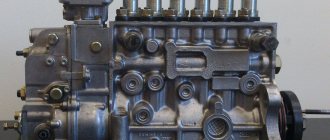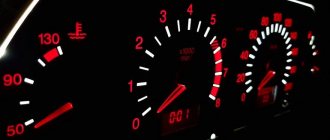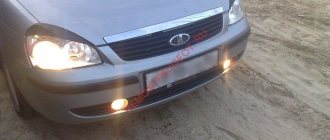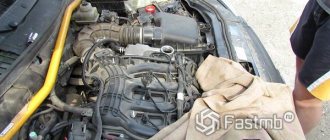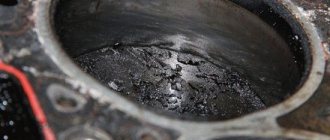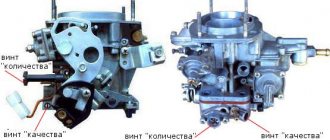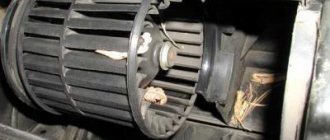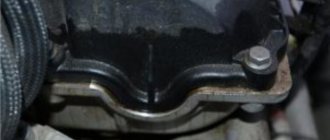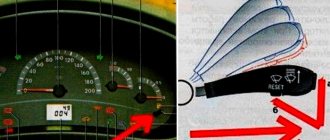They say there is no use in reinventing the wheel - everything has already been invented before us. That's how it is with an internal combustion engine. It is constantly being improved, but the principle of operation has remained the same for many years. And problems too. Malfunctions in the operation of the power unit affect everyone, and misfires are not the least of the long list of possible troubles.
To understand what a misfire is, you need to understand the principle of operation of the cylinders in the engine. In a nutshell, the energy of the fuel is converted into the force of movement in the cylinders. The fuel is ignited there and causes the cylinders to move around the cylinder. During a misfire, the air-fuel mixture in one or more cylinders ignites separately from the others, or there is no ignition at all. The failure of one or more cylinders sharply reduces engine power, increasing fuel consumption.
Symptoms of a problem
- When such a problem occurs, the engine with a carburetor “troits”, often stalls, and a loss of power is also felt. Fuel from the “broken” cylinder enters the exhaust system. The smell of fuel, characteristic pops and shots in the muffler indicate the presence of misfires.
- If the engine is fuel-injected, the malfunction can be easily noticed by similar signs and noticeable shaking of the car. Additionally, the error is stored in the memory of the electronic control unit and is displayed as a special “check” icon on the dashboard. Sometimes the system automatically turns off the fuel supply to the “conflict” cylinder.
Deciphering the P0300 code
Random misfire detected in cylinder(s)
What Causes Code P0300
- damaged or worn spark plugs
- Damaged or worn spark plug and/or ignition coil wires
- The ignition distributor cap is damaged or worn.
- the “slider” of the distributor (ignition distributor) is damaged or worn out
- Fuel injectors are dirty or damaged
- The EGR valve tubes or the valve itself are clogged
- Incorrect ignition timing (late or early ignition)
- leakage of vacuum tubes
- low fuel pressure
- Damaged cylinder head gasket(s)
- distributor cap is cracked
- camshaft position sensor faulty
- crankshaft position sensor is faulty
- The mass air flow sensor (MAF sensor) is faulty
- faulty oxygen sensor (lambda probe)
- Throttle position sensor is faulty
- the catalytic converter (catalyst) is faulty
- faulty engine control unit
Conditions for generating an error
In order for error P0300 to be ultimately recorded by the control unit and stored in memory, certain conditions must be met.
- The system must detect the presence of misfires simultaneously in several working cylinders of the engine.
- When idling, the error is recorded in the memory 210 seconds after the engine starts.
- If the speed is 2000 rpm and higher, then the error will persist after 60 seconds.
- To fix P0300 in the ECU memory, it is required that the omission be more than 3.25% of the number of flashes that occur per 1 thousand crankshaft revolutions.
When misfires occur in the engine, the exhaust toxicity in the exhaust system pipe increases significantly.
This problem can cause an increase in the temperature of the catalyst and its further damage in the form of melting of the honeycomb. And replacing a catalyst is very expensive, even on budget cars.
On some cars, in order to reduce fuel burnout in the catalyst and reduce toxicity, the ECU monitors misfires based on data from the camshaft and crankshaft. In addition to registering an error and the appearance of the Check Engine indicator on the instrument panel, the electronics can turn off some injectors in the cylinders where misfires are observed.
If these conditions are met, the motorist will be able to read P0300 on the scanner. It will manifest itself not only in the form of a lit Check Engine light, but also other associated symptoms.
How is the P0300 code diagnosed?
- Using an OBD-II scanner, all errors are cleared from the control unit (PCM) memory. A test drive of the vehicle is carried out to ensure that there is no error code P0300.
- If the error remains, then using real-time viewing of parameters, the cylinders in which misfires occur are determined
- Checking spark plugs, ignition coils and wires
- Spark plugs are checked for excessive wear and cracks.
- Check the ignition coils, wiring harness and connectors for damage or signs of corrosion.
- Replace spark plugs, high-voltage wires, ignition coils, wiring or connectors as necessary
- If after all of the above the problem still remains, you need to check the fuel injectors and fuel supply system
- Old cars have an ignition distributor. It is necessary to check the distributor cap and slider for damage, cracks or wear.
- If there are other associated DTCs, they should be resolved as necessary.
- After this, test drive the car again to make sure there are no more errors.
- If the P0300 code returns again, you need to check the compression ratio in the cylinders.
- Damage to the cylinders is rare, but quite possible for this error.
- If after all the checks the P0300 trouble code is still present, then it may be an engine control module problem. It may need to be replaced or reprogrammed.
Common mistakes when diagnosing code P0300
One common mistake is to rule out the possibility of a faulty cylinder, fuel injector, or PCM. Also, often after eliminating misfires, diagnostics and repair of associated errors are not carried out.
Associated trouble codes such as a faulty cylinder, faulty fuel injector(s) and/or internal control unit error can also cause the misfire problem.
Characteristic symptoms
Even inexperienced motorists can predict in advance the display of error code P0300 on the scanner, based on changes in the behavior of their vehicle.
There are several signs characteristic of such an error:
- at idle speed the engine vibrates noticeably;
- similar shaking occurs at low speeds;
- when picking up speed, the car can jerk and throw to the sides;
- fuel consumption increases significantly;
- problems in the form of difficulty starting the engine cannot be ruled out;
- traction drops, dynamics deteriorate, the car fails to accelerate normally.
All this is accompanied by a lit Check Engine light on the dashboard.
Having noticed such signs, it is almost certain that there is a misfire. That is, when connected to the computer with a diagnostic scanner, the code P0300 will be displayed in the memory.
This is interesting: How to remove the headlight on a Chevrolet Aveo T300 and replace the low beam lamp
How serious is P0300?
The P0300 error code is considered serious. The reason is that in the presence of this error, problems with the car's handling appear. Operating such a vehicle can lead to dangerous situations on the road. Therefore, it is necessary to understand the causes and eliminate the malfunction as soon as possible.
What needs to be repaired in case of error P0300?
- Replacing damaged spark plugs
- Replacing damaged or worn spark plug wires and/or ignition coils
- Repairing or replacing clogged EGR pipes or valve
- Vacuum tube leak repair
- Replacing a damaged cylinder head gasket
- Replacing a faulty camshaft sensor
- Replacing a faulty crankshaft sensor
- Replacing a faulty air flow sensor
- Replacing a faulty oxygen sensor
- Replacing a faulty throttle position sensor
- Replacing faulty fuel injectors
- Replacing a faulty catalytic converter
- Diagnose and repair other related trouble codes
- Replacing the distributor cap and slider, as well as wires and coils (if installed on the car)
- If necessary, repair malfunctions of internal engine parts.
- Replacing a faulty engine control module (PCM)
- P0300, OBD 2 error codes in Russian, tips
On what cars does it occur?
Although error P0300 is quite universal and widespread, it is most often encountered by owners of domestic cars. It would be fair to include:
- VAZ 2110.
- VAZ 2114.
- Lada Kalina.
- Lada Priora
- VAZ 2115.
Although the last 2 cars are not entirely Russian, they are usually classified as domestic automobile production. On them, errors P0300 are found no less often than on VAZ, among Prior, Kalin and other creations under the Lada brand.
But error P0300 is also typical for foreign cars. Among the most frequently encountered machines that display error code P0300 during diagnostics are the following brands and models:
- Chevrolet Lacetti.
- Hyundai Solaris.
- Kia Rio.
- Hyundai Sonata.
- Kia Ceed.
- Nissan Almera.
- Toyota Corolla.
- Mitsubishi Lancer, etc.
If we compare the frequency with which error P0300 occurs on VAZ 2114 cars and on the same Korean Hyundai Solaris, it is the foreign car that will be in a more advantageous position.
But still, a lot depends on how the car is maintained, how promptly all consumables are changed, and what quality of fuel is used.
As a result, the P0300 error is multi-brand and can affect a car of any make, model and year of manufacture.
If error P0300 eventually appears on the scanner when checking the control unit, the only correct solution would be to carry out diagnostics and begin repair work.
Causes of misfires
Among the many reasons why the ignition does not work properly, the main ones are:
- Failure of elements of the ignition system - armored wire, spark plugs, coil or distributor-breaker (distributor in carburetor internal combustion engines). In addition, at low temperatures, condensation may form in the spark plug wells, which can cause “punching” into the block.
- Malfunctions in the fuel-air system can be associated with injection nozzles, air and fuel filters clogged with dirt and deposits. These ailments manifest themselves in the “triple” of the engine at idle, which disappears after warming up. An open circuit in an individual injector as a result of unstable power supply can also disrupt the fuel supply.
- Low compression in all cylinders or its uneven distribution indicates wear of the elements of the cylinder-piston group or problems with the gas distribution mechanism (GRM). In this case, the fuel-air mixture is compressed with less pressure, which is why ignition difficulties arise.
- Incorrectly adjusted valve clearance can lead to a violation of the tightness of the entire chamber during the compression stroke. Lack of optimal fit of the valve plate to the seat, as well as burnout of the valve, will cause misfires.
- Poor fuel quality, leakage or low supply pressure due to improper operation of the fuel pump can also cause misfires. To identify the problem, it is necessary to check the serviceability of the pressure regulator in the fuel rail. It is equally important to ensure that there are no air leaks or water entering the fuel tank.
- A malfunction of the electronic control unit results in the transmission of an incorrect signal from the sensors to turn off the injectors. Therefore, the engine begins to “trouble” and there is a misfire. In such cases, it is better to check the ECU firmware and sensors of the electronic engine management system.
Diagnostics and repair
It is easier to solve this problem for those drivers whose car is “charged” with electric brains. At a service station, using a scanner, the car will show what the misfire error is. For example, misfire in cylinder 4 or misfire in cylinder 3. What can owners of domestic or inexpensive cars do? That’s right, step-by-step testing on your own using, so to speak, the “old-fashioned method”
To find the problem, you can start by doing the following:
- Check wiring. High-voltage wires can often cause problems. It is necessary to carefully check the insulation, all connectors and the fixation of these connectors. The surface should be free of various types of chips and cracks. Also, bending the core is not allowed, which often happens with old wiring. If the problem is in the wiring, you will understand it immediately;
- Candles. A thorough check of the spark plugs will help identify the problem if there is one. It is necessary to unscrew each spark plug and make a visual diagnosis of each one. There should be no damage or blockages on them and the gap should be appropriate;
- We inspect the distributor. To inspect it, you need to disassemble it. This part is a rather complex mechanism; for disassembly it is better to use a diagram. The diagram will help prevent any mistakes during reassembly and save your time;
- Compensation in cylinders. You also need to check the compensation in the cylinders. To perform this procedure you will need some tools: a pressure gauge and a spark plug connector. This nozzle is inserted into the spark plug seat, and the pressure is checked using a pressure gauge;
- Valves. By examining the valves, you can detect a malfunction. The fact is that valves can be of poor quality, so they are often the cause. You also need to check the level of adjustment. It is advisable to carry out inspection of the valve only after all the operations indicated above. Valves tend to get stuck when the car is subjected to strong mechanical shocks. Seals greatly affect compression as a result of their wear;
- View cylinders. To check the cylinder you need to perform step-by-step checks. Turn on the ignition and set the idle speed. Next, start disconnecting the wires from the spark plugs one by one. If at the moment the cable is disconnected the operation of the motor changes, this means that this particular spark plug is damaged and needs to be replaced.
It is extremely important to remember that this diagnostics and car repairs involve contact with high voltage and hot parts. It is necessary not to forget about safety precautions and work extremely carefully. It is also important, when performing repairs, to follow the sequence indicated above. The sequence will help you identify the problem as quickly as possible.
We recommend: How to replace the VAZ-2114 heater motor with your own hands
For vehicles with electronic control unit
Troubleshooting using the ECU is quite simple. Connect the autotester using the OBD connector and find a transcript of the detected errors. Codes P0301, P0302, P0303, P0304 indicate problems in one of the four cylinders, armor wires, spark plugs or gaskets associated with them in accordance with the last digit of the code. If the tester shows error P0300, then you need to check the entire system as a whole, including filters and the composition of the combustible mixture. Problems with the injectors are indicated by codes P0201, P0202, P0203, P0204, etc. (according to the number of cylinders in the power unit). Code P0400 describes a problem in the exhaust manifold.
Domestic models are often equipped with old-generation ECUs. It is better to change such a system at authorized service centers for an updated one that is compatible with the electronics of the car as a whole. Modern units make it easy to detect misfires in specific cylinders.
For vehicles without electronic control unit
Diagnosing a misfire without an ECU is difficult. Since a couple of cylinders can fail at once, you will have to check each of them manually. To inspect the condition of the cylinders and piston rings, it is necessary to remove the valve covers. During the inspection process, it is also important to make sure that armored wires, spark plugs and electronic parts are working properly.
Use an ohmmeter to measure electrical resistance in high voltage wires. If the values are unacceptable, the wires must be replaced. In addition, you should check the condition of the fuel pump and measure the compression indicators in the cylinders. A carburetor-type engine requires special diagnostics of the carburetor itself.
If you cannot find the cause of the car malfunction on your own, and misfires are increasingly making themselves felt, it is better to immediately contact the official service center of FAVORIT MOTORS Group of Companies.
Experienced technicians will conduct computer diagnostics of all systems, eliminate defects, and replace or repair faulty parts. Our specialists use only professional equipment, original spare parts and consumables. We guarantee high quality customer service at affordable prices. Sign up for service Service center contacts Ask a question
